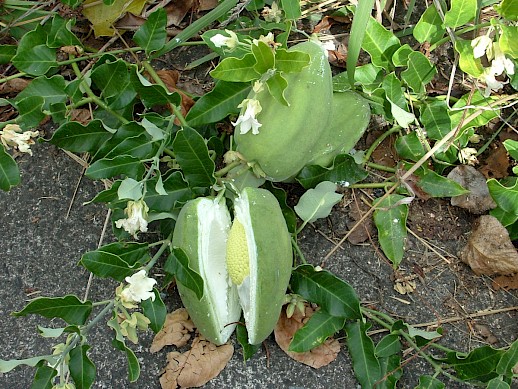Moth plant a menace to bush and butterflies
This invasive South American vine is also known as kapok vine, mothvine, milkvine, milk weed, wild choko vine, and cruel plant. It’s been been cultivated throughout New Zealand, but has naturalised in warmer parts of the country and is beginning to spread quickly. It’s most distinctive feature is its large, green, pear-shaped pods containing white fluffy seeds but at this time of year, the vines are a mass of waxy white flowers, sometimes tinged with pink. Moth plant is an unwanted organism banned from sale, distribution and propagation in New Zealand.
Why is it wicked?
Moth plant is also called “cruel plant” probably because its flowers can trap visiting insects like moths, butterflies and bees. But what makes it a particular problem is its ability to grow rapidly to the tops of forest canopies where it forms huge, heavy, long-lived masses. Moth plant seeds are spread by wind and can travel long distances.
What can you do?
Firstly, wear gloves as the milky-white sap of moth plant can irritate bare skin. Secondly, before the pods form, either pull the vines out by the roots, or treat the stems with a suitable herbicide to kill the vines - check out the weed search on the Weedbusters website for more information on control methods. Any pods that do form need to be disposed of at a landfill for deep burial. Check your handiwork monthly for new seedlings or vine regrowth. Replanting with more desirable species as you go is a good tip too.
Alternatives are?
Some nice native climbers you could try planting instead are puawananga (Clematis paniculata) or star jasmine (Trachelospermum jasminoides).
